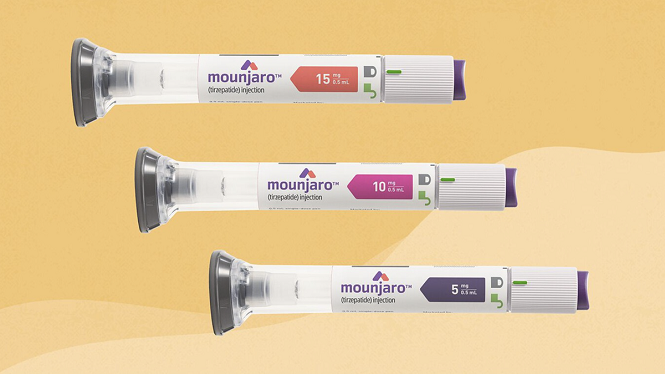Mounjaro, also known by its active ingredient tirzepatide, has become a highly sought-after injectable treatment for both Type 2 diabetes and obesity management. Patients around the world, including those in Dubai, are embracing this revolutionary medication because of its dual-acting mechanism that controls blood sugar and suppresses appetite. However, like all medications, Mounjaro is not without its side effects—especially as patients move up the dosage ladder. Understanding how to manage these effects at the 7.5 mg phase is crucial for long-term treatment success.
During the 7.5 mg phase of Mounjaro injection in Dubai, many patients begin experiencing a more pronounced therapeutic effect along with some potential side effects. This is often the first intermediate dosage level after the initial 2.5 mg and 5 mg steps. It is also during this phase that symptoms such as nausea, fatigue, and digestive discomfort may arise. Fortunately, these issues can be controlled with lifestyle adjustments and close medical supervision. The Arabic term Mounjaro 7.5 مونجارو 7.5 refers to this 7.5 mg stage, which is considered a crucial checkpoint for adjusting to the medication’s potency.
Why Side Effects Occur at 7.5 mg
Mounjaro functions by mimicking the body’s natural incretin hormones—GLP-1 and GIP. These hormones regulate blood sugar, slow gastric emptying, and increase insulin secretion while decreasing glucagon. As the dose increases to 7.5 mg, these effects become stronger, often triggering initial discomfort as the body adjusts to the medication’s more powerful action.
While many patients breeze through the earlier stages without incident, the 7.5 mg dose can cause:
-
Gastrointestinal symptoms (nausea, bloating, gas)
-
Fatigue or mild dizziness
-
Constipation or diarrhea
-
Decreased appetite
These are generally short-term and diminish as the body becomes accustomed to the new dose.
Effective Strategies for Managing Side Effects
1. Eat Smaller, More Frequent Meals
Instead of eating three large meals a day, opt for five to six smaller meals. This eases the workload on your digestive system and helps reduce feelings of nausea or bloating—common side effects during this phase.
2. Avoid High-Fat and Greasy Foods
High-fat meals can intensify nausea and slow digestion further. Stick to lighter, nutrient-dense foods like fruits, vegetables, lean proteins, and whole grains.
3. Hydrate Consistently
Dehydration can worsen symptoms like constipation or dizziness. Drink plenty of water throughout the day, and consider electrolyte-infused drinks if you’re feeling weak or light-headed.
4. Stay Active but Don’t Overexert
Light to moderate exercise, such as walking or yoga, can improve digestion and reduce fatigue. However, avoid strenuous activity if you’re experiencing dizziness or gastrointestinal upset.
5. Follow a Routine Eating Schedule
Eating at irregular times can throw your system off, especially while on Mounjaro. Sticking to a consistent meal plan can help regulate digestion and mitigate symptoms like stomach pain or heartburn.
When to Contact a Healthcare Provider
While mild side effects are common and usually manageable, certain symptoms warrant immediate medical attention. Seek help if you experience:
-
Severe abdominal pain
-
Persistent vomiting
-
Signs of pancreatitis (back pain, fever, vomiting)
-
Signs of an allergic reaction (rash, shortness of breath)
Dubai is known for its world-class healthcare infrastructure, so if you’re undergoing Mounjaro 7.5 mg treatment in the city, rest assured that top-tier support is available when needed.
Support Systems Available in Dubai
The healthcare ecosystem in Dubai is highly advanced, offering full support for patients on chronic treatments like Mounjaro. From multilingual pharmacists to endocrinologists familiar with the latest GLP-1 and GIP treatments, you can expect guidance at every stage of your therapy. Some clinics even provide virtual consultations and mobile reminders for injection schedules and follow-up appointments.
Additionally, specialized weight-loss and diabetic management clinics often include dietitians and fitness experts on staff. This multi-disciplinary approach is ideal for patients managing side effects, as experts can recommend custom meal plans and exercise regimens to ease discomfort.
Natural Remedies That May Help
For patients who prefer incorporating natural approaches, a few strategies have been known to alleviate mild side effects:
-
Ginger tea: Helps with nausea
-
Peppermint oil capsules: Soothes stomach cramps and bloating
-
Magnesium supplements: Can aid in relieving constipation
-
Chamomile tea: Eases gastrointestinal discomfort and promotes relaxation
Always consult your doctor before adding supplements or herbal remedies, especially while using powerful medications like Mounjaro.
What to Expect as You Continue
As your body adjusts to the 7.5 mg dose, many of the side effects should begin to subside within a few weeks. Most patients report that after the third or fourth injection at this dose, the intensity of symptoms like nausea or fatigue reduces significantly. This makes it easier to remain compliant with the treatment and move forward with higher doses if recommended.
In fact, many people find that once they pass this phase, their results start accelerating—especially in terms of weight loss and improved metabolic function.
Conclusion: Mastering the 7.5 mg Phase
The 7.5 mg dosage of Mounjaro injection in Dubai represents an important step in your health journey—bringing you closer to better blood sugar control and sustainable weight loss. While some discomfort is natural during this phase, it’s usually short-lived and manageable with simple lifestyle adjustments.
By staying proactive and working closely with healthcare professionals, you can effectively minimize side effects and gain the full benefit of Mounjaro 7.5 injections. Whether you’re a resident of Dubai or visiting for specialized care, you have access to some of the best resources available for managing and optimizing your Mounjaro treatment.







0 Comments